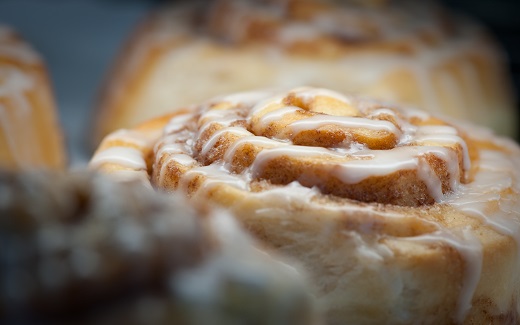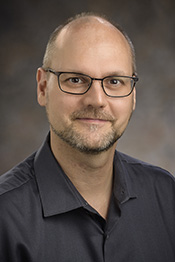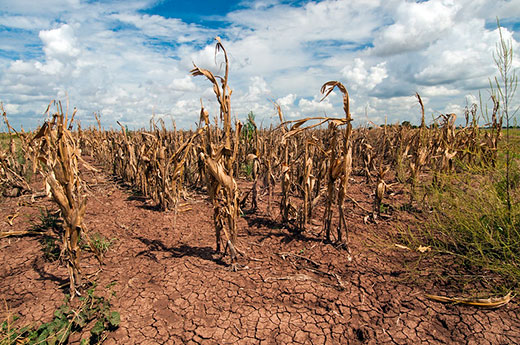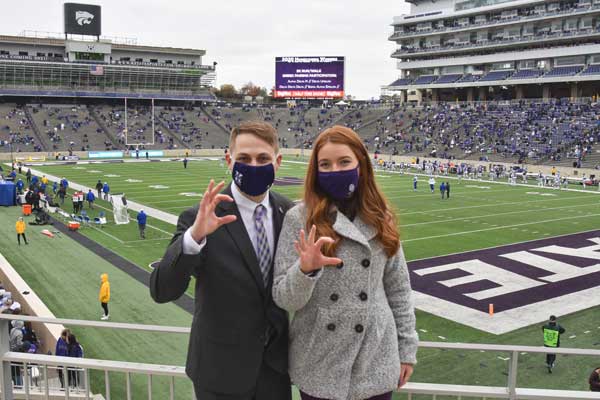10/28/20
K-State Current - October 28, 2020
K-State Current is a weekly news update for the Kansas Board of Regents to apprise the Regents on a few of the many successes and achievements made by K-State faculty, staff and students.
K-State News
Computer science professor funded by NSF for open science research project
 Open science is the movement to make scientific research and data accessible to all, with an end result of sharing this knowledge through the publishing of open scientific research, campaigning for open access and generally making it easier to publish and communicate scientific knowledge.
Open science is the movement to make scientific research and data accessible to all, with an end result of sharing this knowledge through the publishing of open scientific research, campaigning for open access and generally making it easier to publish and communicate scientific knowledge.
Pascal Hitzler, professor and Lloyd T. Smith Creativity in Engineering chair in the computer science department and director of the Center for Artificial Intelligence and Data Science at Kansas State University, has been awarded nearly $300,000 from the National Science Foundation for his related project, "Open Science Data in Semantic Web Research."
"It is critical we establish open science as the default practice in the academic community," Hitzler said. "Reporting a research result is more than just the manuscript. It is the actual process undertaken, the data and metadata, the implemented software and environment, and more."
The two-year-funded project will leverage the leadership and reputation of the Semantic Web journal, an open-access prominent journal published by project collaborator IOS Press, Amsterdam, the Netherlands. It is co-edited by Hitzler and co-principal investigator on the grant, Krzysztof Janowicz, a professor for geographic information science and geoinformatics, and director of the Center for Spatial Studies in the geography department at the University of California, Santa Barbara. A second co-principal investigator is Cogan Shimizu, postdoctoral fellow at Kansas State University in the computer science department and editorial assistant of the Semantic Web journal.
The team hopes to demonstrate that the open sharing of data underlying publications can be done without significant overhead and will provide significant added value. The approach can then serve as a model for other journal editors who seek a blueprint for adopting similar open science data practices.
"We will, for the Semantic Web journal, require authors to sustainably publish the data and software underlying their results, and include software and data provisions as part of the peer review assessment," Hitzler said. "We will develop technology in support of open science and will work with the community to refine the software and policies that enhance it.
"It is also important to ask questions pertaining to transparency and reproducibility, such as those regarding contributors' reviews, their published metadata and, in particular, where are the data and software that underlie their reported results? We will provide this information to researchers and the general public alongside the traditional publications. We will furthermore provide this information in the form of knowledge graphs, which makes it easily reusable by third parties' information systems."
Making the connections between these artifacts through open science practices will help to democratize research by lowering the barrier of entry to understanding and replicating cutting-edge research.
"This will simultaneously accelerate novel research by reducing the need to reimplement software or re-collect data," Hitzler said. "Connecting these components and data in a useful and understandable way is a core mission of the Semantic Web research field.
"The project will result in highly visible outcomes as part of the review and publication process of the journal, which is a leader in its field. As such, we will also promote the visibility and impact of research and outreach at Kansas State University."
Hot, dry, windy events are occurring in Western Kansas, west Texas more frequently
 Hot, dry, windy conditions are happening with more frequency in western Kansas south to west Texas, according to a new study by Kansas State University researchers. The result can include loss of crop yields. (Photo courtesy of Bob Nichols, U.S. Department of Agriculture)
Hot, dry, windy conditions are happening with more frequency in western Kansas south to west Texas, according to a new study by Kansas State University researchers. The result can include loss of crop yields. (Photo courtesy of Bob Nichols, U.S. Department of Agriculture)
You don’t need to tell folks in western Kansas that it can get hot there. And sometimes windy. And sometimes really dry. But when all three conditions happen at the same time – and especially for a long period of time – droughts develop, crops produce less grain, and wildfires are sparked more easily.
And according to a new Kansas State University study, the conditions are happening more frequently than they used to in western Kansas, and south into west Texas.
“We found increases in the frequency of hot, dry, windy events over time that indicate new and different patterns in the Great Plains,” said Vahid Rahmani, an assistant professor of biological and agricultural engineering at K-State. “This research showed the highest frequency of hot, dry, windy events occurred in western Kansas southward into Texas for the period 1949 to 2018.”
Rahmani teamed with then-K-State doctoral student Ameneh Tavakol and professor John Harrington in K-State’s Department of Geography and Geospatial Sciences on the study. Tavakol is now an environmental scientist in California.
The team analyzed data collected over two time periods, 1969-2018 (50 years) and 1949-2018 (70 years), examining spatial and temporal variations of hot, dry, windy events. The 50-year data came from more stations (44) than were available for the 70-year data (27).
The study, partially funded by the U.S. Department of Agriculture Ogallala Aquifer Program, was published in the Sept. 24, 2020 edition of Nature Research Scientific Reports.
“Farmers depend on favorable weather conditions for their livelihoods,” Rahmani said. “Devastating crop damage can be caused by events where low humidity, high temperature, and high wind speeds combine to disturb the water balance in plants and intensify evapotranspiration.”
He cited a period in 1888 when a severe stretch of hot, dry and windy days desiccated corn acreage in southern Kansas. Another time, in 1931 and following a month without rain, seven consecutive days of hot winds were reported at Ashland, Kansas, including a report of 120 degrees F on Sept. 5.
Rahmani said this type of research deepens understanding about events such as this year’s derecho, the destructive storm that raced across the U.S. Midwest and caused an estimated $7.5 billion in agricultural losses alone. The August 10 storm swept across several states, flattening crops and damaging homes, businesses and other structures with winds up to 140 miles per hour.
In Rahmani’s team’s research, the scientists found that the largest number of annual hot, dry, windy events occurred in Dodge City, Kansas with 60 occurrences.
Crop damage can occur from just a few hours of hot, dry, windy events, he said.
Those events, also called “furnace winds,” are when the temperature is higher than 35 degrees C or 95 F (a threshold considered critical for crop development), the relative humidity is below 30%, and the wind speed is equal to or greater than 7 meters per second, he added.
“The trend toward increased days of very hot, dry, windy events is significant in the western Great Plains,” he said. “Monthly values indicated the highest probability of hot, dry, windy events in July and lowest chances in May and September during the warm season.”
Rahmani, who leads K-State’s Climatic and Hydrologic Extremes Laboratory, said even as a child, he was interested in water and its availability and use in rural areas and cities. That and a desire to teach at the university level made his career path obvious. Now, his research focuses on how resilient our infrastructures are to climate extremes of droughts and floods and how decision makers can best adapt to those extremes. The goal, he added, is to understand the impacts of climate change on water and food security.
This latest research means at field scale, farmers can use the findings to make better decisions about their irrigation and crop practices. At the regional and national scale, the information can help farmers and planners improve their water management and planting strategies.
“The higher temperatures associated with climate change may increase the frequency of extreme hot, dry, windy events,” he said. “Hot, dry, windy events have implications beyond crop production. Wind-driven wildfires can occur in areas that never experienced them before. Increased evapotranspiration is expected where and when these compound extreme meteorological events were most observed. Adaptation and mitigation strategies may need to be adjusted to effectively cope with the negative impacts of these events.”
Getting into the details
The highest station-based average of annual hot, dry, windy events in the central United States occurred during the droughts of 1980, 2011, and 2012. For the 1949-2018 period, the highest averages of annual hot, dry, windy events were 45 and 31 in 2011 and 1980, respectively.
The trends were not the same across the whole region, however. The research revealed that unlike the upward trend in Texas and the western Great Plains, there has been an overall decrease in these events in the eastern regions of North Dakota and South Dakota.
Previous studies by the research team looked at the probability of climate extremes in a changing climate and evaluation of high temperature extremes in the Mississippi River Valley, and changes in the frequency of hot, humid days and nights in the Mississippi River Basin.
“Our current effort examines how different climate indices can be improved and used to enhance crop yield and water management particularly during extreme climate and hydrologic conditions of drought and flood,” Rahmani said. “We hope that our research helps farmers and others plan to increase their resilience in coming years and decades and at the same time reduce their vulnerabilities in the new conditions.”
K-State Faculty Highlights
APDesign architecture professor earns global food systems grant
 Jonathan Dessi-Olive, assistant professor of architecture in the College of Architecture, Planning and Design, or APDesign at Kansas State University, was awarded a $60,000 grant through the K-State Global Food Systems Seed Grant program.
Jonathan Dessi-Olive, assistant professor of architecture in the College of Architecture, Planning and Design, or APDesign at Kansas State University, was awarded a $60,000 grant through the K-State Global Food Systems Seed Grant program.
Dessi-Olive's grant proposal is for a pilot project titled "Sustainable Development for Rural Kansas through Fungi-based Building Materials," which brings together faculty from K-State's departments of architecture, plant pathology, and agricultural economics.
"Mycelia," said Dessi-Olive, "is the vegetative filaments of fungi, used to form entangled networks of hyphae around agricultural byproduct materials such as hemp herd, corn husk or wood sawdust to produce materials that have material properties that lend themselves to the fields of building construction, architecture and interior design.
"Over the next year, we will assess the technical and economic feasibilities of redirecting byproducts from the local agriculture industry in Kansas for use in the production of mycelium-composite materials that use novel growth forms of fungi for use in sustainable building construction, and design."
"This is an exciting opportunity for Dessi-Olive," said Matt Knox, professor and department head of architecture. "His creative approach and collaborative outreach will provide innovative support for K-State's land-grant mission."
The K-State program is a universitywide initiative in Global Food Systems and builds on its strengths and land-grant mission to help address the challenge of sustainably feeding a world population that will double global food demand by 2050. Given the importance of food production to the Kansas economy, the innovation and knowledge resulting from this initiative are expected to assist with job creation and economic development in the state and to help Kansas remain a leader in food production. To this end, the state of Kansas has provided K-State with funding for global food systems-related research, workforce development, and economic development and innovation activities.
K-State Student News
K-State students select 2021 Student Ambassadors
Two students have been chosen to represent Kansas State University as the 2021 Student Ambassadors.
Marissa Lux, junior in communications studies, Olathe, Kansas, and Bennett Shipley, junior in marketing, Olathe, were announced as the ambassadors Oct. 24 during halftime of K-State's Homecoming football game against the University of Kansas.
Established by the K-State Alumni Association in 1977, the Student Ambassador program elects one male and one female student each year to represent the student body at Alumni Association events throughout the state and at university activities.
Lux and Shipley will visit with prospective students and alumni; attend Student Alumni Board meetings and activities; assist with programming on campus such as the Alumni Fellows program, All-University Homecoming Committee and other special events; and assist the President's Office as needed.
They were elected during Homecoming Week by a student vote from a group of six semifinalists. The ambassadors serve a one-year term, and each receives the Kirk Family Student Ambassador Scholarship of $2,500, clothing from Manhattan clothing store Borck Brothers and an official K-State ring from Balfour and the Alumni Association.
Typically, ambassador candidates excel academically and are extensively involved in volunteer and philanthropic activities. Lux and Shipley are role models for these qualities.
Lux is a member of Kappa Kappa Gamma sorority. She served her sorority as its 2020 communications director and as chair of its Homecoming Committee for the Crazy Cat Kickoff event. Additionally, she is involved with Student Governing Association serving as a 2018 intern and a 2019 student senator for the College of Arts and Sciences. Lux also serves as a student ambassador for New Student Services, a counselor for Wildcat Warm-up and as a student worker for the K-State Alumni Association's communications team. She is the daughter of Dianne and Larry Lux.
"K-State helped me find my support system and make life-long memories. I have been able to share my love of K-State with incoming students while working at the Office of Recruitment and Admissions, this has showed me how grateful I am to be a Wildcat. I want to continue sharing everything that our university has to offer so that even more students can find their home at K-State," Lux said.
Shipley is member of Phi Delta Theta fraternity. He has previously served his fraternity as vice president of communications. Additionally, he has served as a member of the K-State Homecoming Committee, the 2019 Wildcat Request Live emcee and has served on the K-State Athletics Student Advisory Committee. Shipley is the son of Rob and Stacy Shipley.
"K-State is important to me because it has been a place where I have been able to grow as a person and learn more about myself. I have also had the opportunity to connect with so many great people and experience some great things," Shipley said.
"Like their predecessors, Bennett and Marissa have a strong love for our university," said Alan Fankhauser, assistant director of alumni programs and adviser to the ambassadors. "The Alumni Association is excited to host them at our upcoming events for the year. We look forward to when they have the opportunity to meet more of the K-State family."
For more information on the Student Ambassador program, visit k-state.com/studentambassadors.
Fashion studies students selected to participate in virtual fashion week
Gracie Key and Jaxson Metzler, seniors in fashion studies, showcased their design collections during this year’s Kansas City Fashion Week, which was held Sept. 24-26. Each season, KCFW gives students from across the nation an opportunity to showcase their own collections on the runway.
This year’s event was hosted virtually due to the COVID-19 pandemic.
“Preparing for the show with COVID-19 was an interesting task,” explained Key. “There were minor challenges such as scheduling safe fittings and fabric shipment delays, but the biggest challenge was being prepared to change everything at a moment's notice. If a model happened to get sick or exposed days prior to filming, then I had to be ready to fit a new model very quickly.”
Metzler noticed the biggest change in the scheduling. “On runway day, we normally spend 12 hours at the
event but with COVID-19, we had to waterfall the schedule, so everyone was properly distanced. Overall, we spent about four hours on set for filming day. KCFW did an amazing job of making sure the whole filming process was safe and felt special.”
Key debuted her collection “In the Chateau”, which embraces femininity and influences empowerment by using inspiration from the Palace of Versailles. “French chateaus, originally built for defense and structure, are beautiful works of art that are prized possessions of France,” said Key. “To mimic this idea, I have created a collection that is ornate and feminine to highlight the powerful women who wear it.”
Originally from Louisburg, Key started her journey as a fashion designer by creating custom evening wear, while practicing sustainability through reusing and recycling fabrics. She has expanded her brand into the ready-to-wear market while also continuing to create custom pieces and one-of-a-kind, sustainable items. She is the owner of Gracie Key™, which was created to empower women through affordable and sustainable designer fashion. Each piece is cultivated to highlight individuality and bring a bold, feminine touch to every wardrobe. Gracie Key™ is a ready-to-wear collection that has a classic style that is both timeless and versatile. Follow her on Facebook and Instagram and visit her website to learn more about Gracie Key™.
Metzler debuted 16 pieces from his collection “The Pearl”, inspired by Dutch Golden Age painter Johannes Vermeer’s painting, The Girl with the Pearl Earring, as well as other predominant paintings of his. The collection, originally designed with12 pieces, was set to debut in March but with the postponement of fashion week, he was able to add four additional pieces.
Metzler, originally from Minneapolis, was inspired to do apparel design and production after stumbling upon Project Runway as a kid. “I was fascinated at how they could take an idea and transform it into a beautiful garment. I have been designing ever since,” he said. The mission of Metzler's brand, Jaxson Wyatt, is to create clothes that empower all women. “If you can feel confident in what you are wearing, you can rock whatever you do, whether it be at your job, a night out on the town, or a daunting first impression. We also have the responsibility of creating clothing that is more socially and environmentally sustainable.” Following his time at K-State, Metzler hopes to move to New York City or London to grow his fashion design business. You can find more on Metzler’s designs by visiting his Instagram or his website.
KCFW and the K-State fashion studies program have a great relationship, with many students having received the opportunity to showcase their work during the event. Teisha Barber, president of KCFW, has praised the apparel and textiles program with producing good quality work and students who are extremely professional.
For more information on Kansas City Fashion Week, visit kcfashionweek.com
The fashion studies program, located in the College of Health and Human Sciences, is focused on human well-being related to the human need for clothing and textiles products. As the only four-year fashion studies program in the state of Kansas, students are prepared to meet the needs of the current fashion industry and to advance it toward a more socially and environmentally resilient industry throughout their careers. Students are inspired to envision fresh new approaches to the global challenges facing every aspect of the fashion industry. For more information on K-State’s fashion studies program, visit their website.








